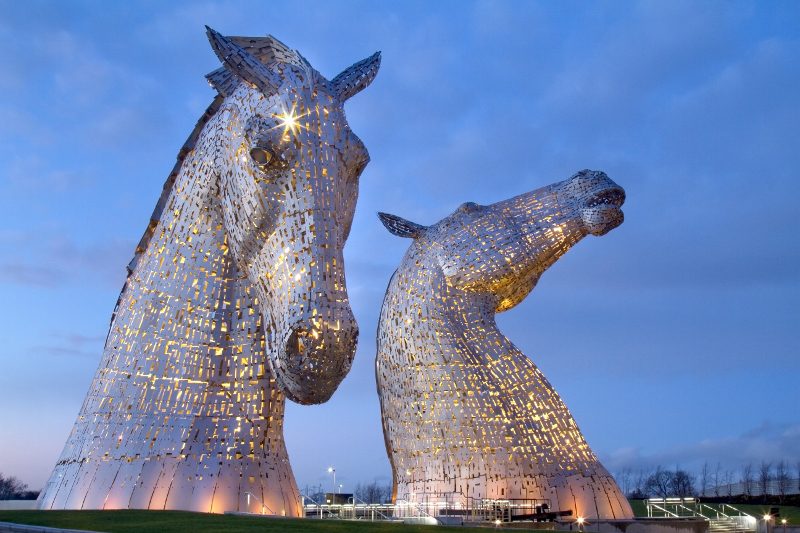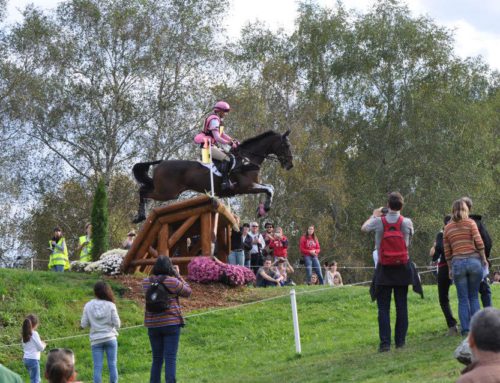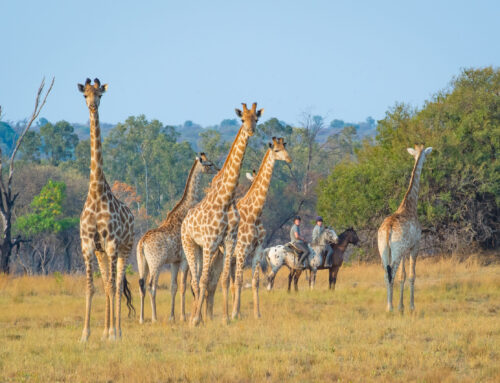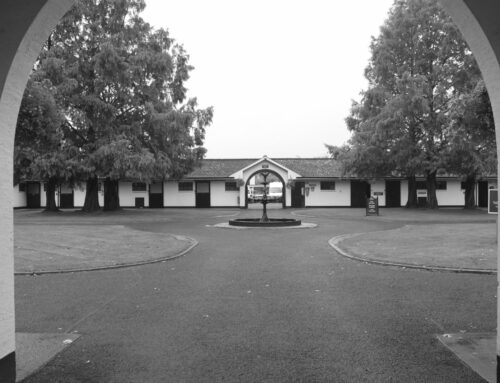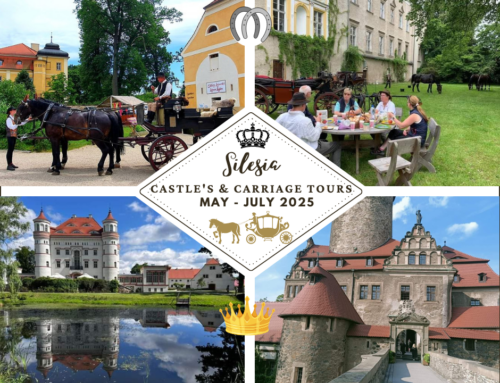Have you seen photos of large horse sculptures and wondered where they are located?
If you are travelling to Scotland and heading from Edinburgh on the road between Falkirk and Grangemouth look out for the Kelpies. I am sure you won’t miss them!
The Kelpies are the largest equine sculpture in the world at 30-metre-high horse-head sculptures, situated in Helix Park near the M9 Motorway and are a monument to Scotland’s horse-powered industrial heritage.
The two massive steel-plated equine sculptures known as the Kelpies were created by Glasgow-based Andy Scott. They form a dramatic gateway in Falkirk at the eastern entrance of the Helix, a major land transformation project between Falkirk and Grangemouth which is now a major visitor attraction since April 2014.
They sit either side of a specially constructed lock and basin, part of the redeveloped Canal Hub.
The Horses’ heads are the animal’s links to the region’s industrial heritage and the Scots legend of water-based mythical horses, or Kelpies.
Scott’s vision for the Kelpies follows the lineage of the heavy horse of industry and economy, pulling the wagons and ploughs, barges and coal ships that shaped the structural layout of the area.
Scott refers to Clydesdales, Shires and Percherons, of the fabled Equus Magnus of the northern countries. “I wrote of working horses. Of their role in the progress of modern society, as the powerhouses of the early industrial revolution, the tractors of early agriculture and, of course, the first source of locomotion for barges on the Forth & Clyde canal, which The Kelpies will soon inhabit.”
The materials that made up the finished Kelpies were deliberately chosen to be those of Scotland’s former industrial heartland – steel construction on an architectural scale.
What are the Kelpies?
A kelpie, or water kelpie, is a shape-shifting spirit inhabiting lakes in Scottish folklore. It is a Celtic legend; however, analogues exist in other cultures. It is usually described as a black horse-like creature, able to adopt human form. Some accounts state that the kelpie retains its hooves when appearing as a human, leading to its association with the Christian idea of Satan as alluded to by Robert Burns in his 1786 poem “Address to the Devil”.
Almost every sizeable body of water in Scotland has an associated kelpie story, but the most extensively reported is that of Loch Ness. Parallels to the general Germanic neck or nixie and the Scandinavian bäckahäst have been observed. More widely, the wihwin of Central America and the Australian bunyip has been seen as counterparts. The origins of narratives about the creature are unclear but the practical purpose of keeping children away from dangerous stretches of water and warning young women to be wary of handsome strangers has been noted in the secondary literature.
The kelpie is even mentioned in Robert Burns’ poem, ‘Address to the Devil’:
“…When thowes dissolve the snawy hoord
An’ float the jinglin’ icy boord
Then, water-kelpies haunt the foord
By your direction
And ‘nighted trav’llers are allur’d
To their destruction…”
Located in: The Helix: Home of the Kelpies
Address: Visitor Centre, The Helix, FK2 7ZT, United Kingdom
Phone: +44 1324 590600
Artist: Andy Scott
Opened: 21 April 2014
Website: https://www.thehelix.co.uk/kelpies-tour/
The only way to get inside a Kelpie is on a Kelpies Tour!
Come and see the world’s largest equine sculptures up close and go inside to marvel at the complexity and engineering which created these fantastic pieces of art.
Snaffle Travel will be including a tour to The Kelpies on our Blair Castle & Highlights of Scotland tour in August 2023. Email us for a full program HERE
The Kelpies offers a guided tour that takes you through the vision of artist Andy Scott and how history and industry impacted on his designing of these breath-taking sculptures.
Check out the website
Photo: courtesy of Crawford Jolly
If you have any questions contact Snaffle Travel on info@snaffletravel.com.au

